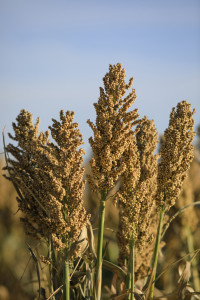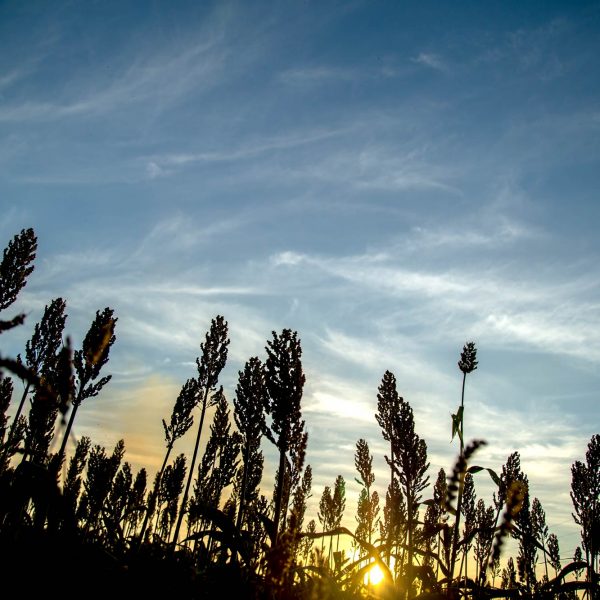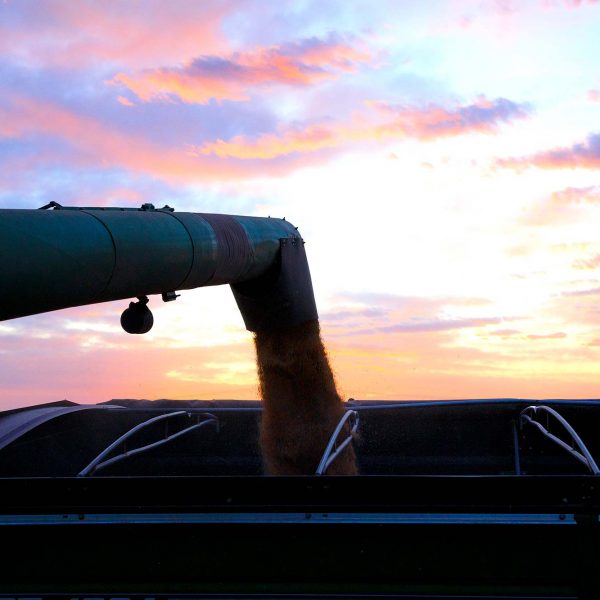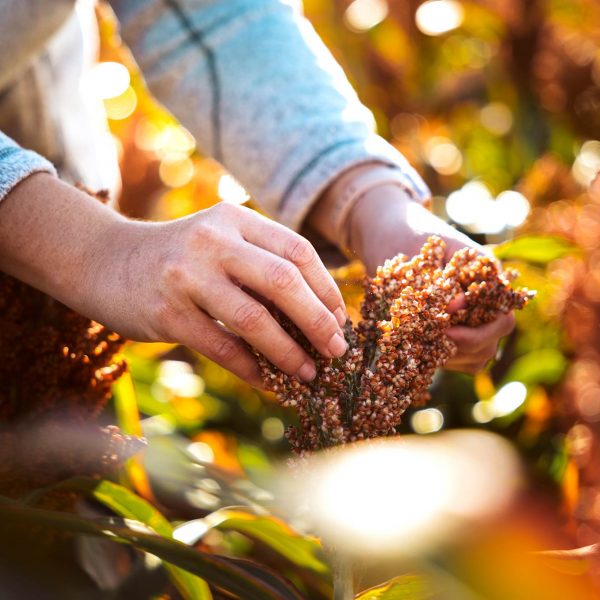
Causes and Prevention of Lodging in Sorghum
Causes and Prevention of Lodging in Sorghum
Brent Bean, Sorghum Checkoff Director of Agronomy
When growers are asked which traits in sorghum need to be improved, standability is usually near the top of the list. There are currently several innovative studies going on in the U.S. and around the world to address lodging of sorghum, and I am optimistic this will lead to better standing sorghum in the future.
There are two types of lodging – root lodging and stalk lodging. Of these, stalk lodging is the most prevalent.
Root Lodging

Root lodging is when the stalk is intact, but the plants lodge from the roots. Root lodging can occur on small plants two to three weeks after emergence, to any time prior to harvest. When it occurs early, the final yield is generally not affect ed since the plants quickly begin to grow upright. Root lodging predominantly occurs when soil conditions are wet and very high winds occur. When sorghum is being irrigated, growers should allow the soil to dry between irrigations during the first 35 days after planting to encourage the roots to develop deeper into the soil.
Insect feeding on roots can also greatly increase lodging, making it important that an insecticide treatment is applied to the seed prior to planting.
Stalk Lodging
When it comes to stalk lodging, both hybrid characteristics and crop management play a role.
Hybrid Selection:
- Charcoal and Fusarium stalk rot: Both stalk rots are associated with lodging. Water-stressed sorghum plants are more susceptible to these pathogens. Consider hybrids with good charcoal and Fusarium stalk rot resistance.
- Leaf diseases: Leaf disease destroys leaf tissue causing a reduction of photosynthesis which leads to a loss of carbon in the stalk. In regions where diseases such as anthracnose are a problem, consider planting a resistant hybrid. Alternatively, consider making a timely fungicide application.
- Stay-green: Choosing a hybrid with good stay-green characteristics is one-way growers can reduce the occurrence of lodging. Leaf senescence occurs when sorghum plants begin to reach maturity and is accelerated by water stress late in the season. This leads to a decrease in photosynthesis resulting in the loss of carbon production. The sorghum plant reacts to this lack of carbon production by robbing carbon from the stalk and leaves to support carbon accumulation in the grain. This potentially leads to lodging as a result of stalk collapse or breakage. The stay-green trait can greatly delay leaf senescence leading to improved standability. It should be noted, however, that the stay-green trait can decrease yield potential in those environments where water stress is not a factor late in the season.
- Stalk diameter and structure, as well as plant height, play a role in a hybrid’s standability. A large diameter stalk with increased lignin content is desirable. A recent study has shown that the arrangement of the lignin within the stalk plays a role in the overall strength of the stalk. A taller plant will be more prone to lodging, but the correlation of height and lodging is actually very low. The effect of plant height on lodging and yield will be discussed in more detail in a future article.
- Hybrids clearly differ in their resistance to lodging. Growers can take advantage of the years when lodging occurs by identifying those hybrids that maintain standability. Extension variety trial lodging ratings and visits with other growers about their experiences are valuable resources when choosing a sorghum hybrid.
Crop Management
- High plant populations lead to smaller diameter stalks which are associated with a greater incidence of lodging. The seeding rate should match the anticipated yield potential of the environment.
- Excess nitrogen in the soil is correlated with increased lodging. Apply only the amount of nitrogen needed for meeting a realistic yield goal.
- Potassium, which promotes sorghum standability, is needed for lignin and cellulose development in plants. Adequate soil potassium is essential.
- Late-season irrigation, even after the grain has reached the hard dough stage, is important to maintain stalk integrity. It is important not to terminate irrigation too soon for those growers who are irrigating.
- Timely harvest is one of the best ways to prevent lodging. Sorghum should be harvested as soon as the grain has matured and the desired grain moisture level is achieved. This is especially important if glyphosate has been used as a harvest aid or if a hard freeze has occurred killing the plant.
Through the integration of better hybrids and sound agronomic practices, farmers can significantly reduce the incidence of lodging in sorghum, ensuring higher yields and better crop quality.




